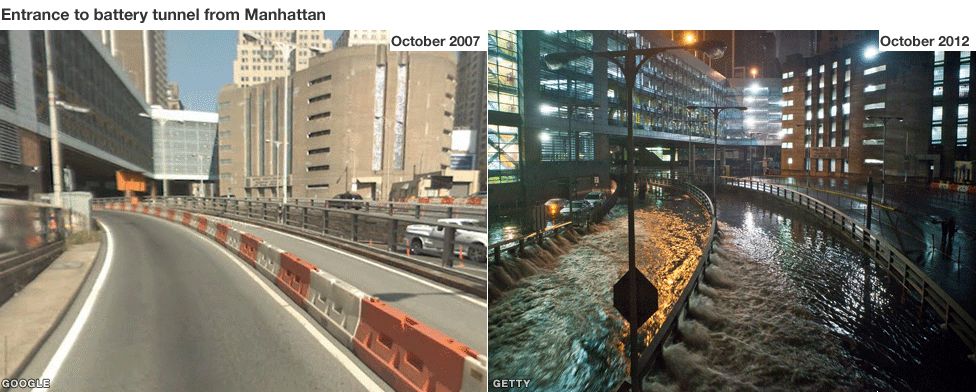How do we protect New York City’s critical infrastructure systems from inundation? This question prompted New York City (NYC) authorities to consider flexible adaptation strategies, infrastructure investments and policy solutions to promote the benefits of ‘protect’ and ‘accommodate’ measures against future sea level rise (SLR), extreme precipitation, coastal flooding and storm surge events.
New York’s coastlines have a long-standing history of having one of the densest infrastructure systems (e.g., airports, telecommunication networks, wastewater treatment facilities, electrical power plants, rail transit systems etc.) due to its location, age and composition with many materials unable to withstand the strains of climate change (Solecki, Rosenzweig, Gornitz, Horton, Major, Patrick & Zimmerman, 2015). In recent years, the vulnerability of these systems has been exacerbated by major Hurricane events such as Hurricane Sandy resulting in the loss of property, lives and natural coastal ecosystems.

Manhattan, New York City: A before and after view of the streets of Manhattan after Hurricane Sandy swept through New York bringing torrential rain and heavy flooding (Photo Credit: BBC News, 2012).
Based on current climate projections, it is estimated that 37% of buildings in Lower Manhattan will be at risk of storm surge by 2050 and almost 50% by 2100 with projected SLR to exceed 6 feet (NYCEDC & NYCORR, 2019). As sea level rise increases, the city has forecasted the cascading impacts on critical sectors (e.g., communications, energy, transportation etc.) ranging from increased saltwater encroachment, coastal erosion, permanent inundation of low-lying infrastructure, amplified need for emergency management actions and pollution run off from brownfield land and treatment plants. This prompted the city to take forward thinking, extensive action by investing nearly $500 million (NYCEDC & NYCORR, 2019) in climate adaptation projects.
Adaptation strategies implemented to protect critical infrastructure within the NYC domain consisted of the following:
a) Operations & management
- Elevate and install barriers around critical systems to maintain operations during storm surge events
- Develop resiliency plans that aim to strengthen communications between partners about restoration of emergency services
- Reducing sewer overflows with green infrastructure
b) Investments in infrastructure
- Hard Measures – Retrofit and elevate existing structures, apply shoreline armouring (e.g., seawalls, bulkheads, jetties etc.) near high value assets, installation of storm surge barriers and offshore breakwater systems that protect against rising sea levels
- Soft Measures – Restore natural buffers through beach and dune nourishment, implementing a soft edge shoreline through salt marsh restoration, expansion of the Bluebelt stormwater management system which preserves natural draining corridors and wetland areas
c) Policy solutions
- Apply land use management techniques (e.g., zoning, design standards, updating building codes, development of flood setbacks, regulations etc.) for coastal zone adaptation
- Prohibit development in high risk areas (Solecki et al., 2015)
Financing climate action can be a huge endeavour for cities who are already struggling to fund their existing infrastructure projects but, as climate change continues to stress systems it provides an opportunity for increased collaboration between local, state and federal government agencies. New York City is a solid example of how major coastal cities will need to apply a combination of protective and nature-based approaches, policy solutions and operational improvements to defend their critical infrastructure systems from growing coastal climate risks.
The case study of New York City was highlighted as a chapter in Climate Change and the Coast: Building Resilient Communities which details a suite of challenges, opportunities and adaptation approaches for building resilience in coastal environments across the world.
References:
NYC Mayor’s Office of Recovery and Resilience & NYC Economic Development Corporation. (2019). Lower Manhattan Climate Resilience Study, 1-29.
Solecki, W., Rosenzweig, C., Gornitz, V., Horton, R., Major, D., Patrick, L., & Zimmerman, R. (2015). Climate change and infrastructure adaptation in coastal New York City. Climate Change and the Coast: Building Resilient Communities, 125-146.